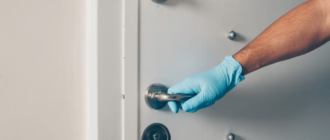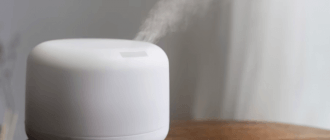How Do Ultraviolet Air Purifiers Work?
With the increasing concern over air pollution and its adverse effects on health, more and more households are turning to air purifiers to breathe easy. While there are a variety of air purifiers available in the market, ultraviolet (UV) air purifiers have gained popularity for their effectiveness in eliminating harmful microorganisms. But how exactly do these UV air purifiers work? In this blog post, we’ll explore the science behind UV light and how it helps in air purification. So let’s dive into the world of ultraviolet air purifiers!
What is an Air Purifier?
An air purifier is a device designed to improve indoor air quality by removing contaminants from the air. These contaminants can include dust, pollen, pet dander, smoke particles and other harmful pollutants that can cause respiratory problems or trigger allergies.
Different Types of Air Purifiers
Air purifiers come in different types, each with their unique features and filtration processes. Among the most common types are HEPA air purifiers, activated carbon air purifiers, ozone generators, ionizers, and ultraviolet (UV) air purifiers.
Ultraviolet (UV) Air Purifiers: The Science Behind
Ultraviolet (UV) air purifiers use advanced technology to improve indoor air quality. The science behind UV air purification is based on the properties of UV light and its ability to kill microorganisms.
UV light is a type of electromagnetic radiation that has a wavelength shorter than visible light, making it invisible to the human eye. It falls between 100-400 nanometers in length and can be found naturally in sunlight or artificially generated through lamps or LEDs.
When exposed to living organisms like viruses, bacteria, and mold spores, UV-C light disrupts their DNA structure by breaking down bonds within the molecules. This process prevents them from reproducing and ultimately kills them.
Unlike other forms of air purifiers, which only trap pollutants or particles inside filters for removal, UV purifiers actively destroy harmful pathogens in the air before they are breathed in by occupants.
The Role of UV Light in Air Purification
Ultraviolet (UV) light is a powerful disinfectant that has been used for many years to purify water and surfaces. Now, UV technology is becoming increasingly popular in air purification systems as well. The role of UV light in air purification is to kill microorganisms such as bacteria, viruses, and mold spores that can be harmful to our health.
UV light works by damaging the DNA or RNA of these microorganisms so they cannot reproduce and spread throughout the environment. When exposed to high doses of UV-C light, these pathogens are destroyed completely, leaving behind clean and sanitized air.
How Does UV Light Kill Microorganisms?
UV light is a powerful tool for disinfection, and it works by damaging the DNA or RNA of microorganisms. UV rays have high energy levels that can break chemical bonds within these molecules, causing irreparable damage to the genetic material of viruses, bacteria, and fungi. This damages their ability to reproduce and infect other organisms.
When exposed to UV light in the right frequencies (typically between 200-280nm), the bonds holding together nucleotides – which are building blocks of DNA – become damaged. When this happens in multiple places along a molecule’s length, it can cause mutations or breaks that prevent it from replicating properly.
This process is known as photodimerization, where two adjacent thymine bases attach themselves together through covalent bonds when exposed to UV radiation at certain wavelengths. The resulting dimerization distorts the shape of DNA strands such that polymerase enzymes cannot read them correctly during replication.
The Process: How Do UV Air Purifiers Work?
UV air purifiers use ultraviolet light to eliminate harmful microorganisms in the air, such as bacteria, viruses, and mold. The process involves exposing these organisms to high-intensity UV-C light that destroys their DNA or RNA structure.
The first step is for the air to pass through a pre-filter which captures large particles like dust and pet hair. After passing through this filter, the remaining air goes through a chamber where it is exposed to UV-C light emitted by a lamp.
As the microorganisms come into contact with the UV-C light, they are irradiated and destroyed without any chemicals or harmful byproducts being released into the air. This process has been proven effective in reducing airborne contaminants that cause allergies and respiratory issues.
The Effectiveness of UV Air Purifiers
UV air purifiers have been gaining popularity as an effective means of eliminating harmful microorganisms from the air we breathe. But just how effective are they?
Studies have shown that UV light can effectively kill bacteria, viruses, and other pathogens that may be present in the air. However, it’s important to note that not all UV air purifiers are created equal. The effectiveness of a UV air purifier depends on several factors such as the strength of the UV lamp, airflow rate through the unit, and contact time between microorganisms and the UV light.
In order for a UV air purifier to be highly effective at killing microorganisms in your home or office, it’s crucial to choose one with sufficient wattage output for its size. It should also have a high enough Air Changes per Hour (ACH) rating so that all areas within your space receive ample exposure to ultraviolet radiation.
Another factor affecting their effectiveness is their ability to filter large particles out of incoming airflow before exposing them to ultraviolet radiation; otherwise these particles might block some of the rays before they reach smaller contaminants like germs.
It’s also important to regularly maintain your unit by cleaning its filters and replacing bulbs when necessary as this will ensure maximum efficiency over time.
Applications and Benefits of UV Air Purifiers
UV air purifiers are increasingly becoming popular in various settings, including homes, offices, schools, and healthcare facilities. One of the main benefits of using UV air purifiers is their ability to eliminate harmful microorganisms such as viruses, bacteria, and mold from the air.
In healthcare facilities, UV air purifiers can help prevent the spread of infections by killing airborne pathogens that may cause illnesses. In schools and childcare centers, they can improve children’s health by providing clean and healthy indoor air.
UV air purifiers also have numerous benefits for people who suffer from allergies or asthma as they can reduce common allergens like dust mites and pet dander. This makes them a great option for allergy sufferers who want a more natural way of reducing symptoms without relying on medication.
Another benefit is that UV air purifiers do not produce any ozone or other harmful byproducts during operation, which makes them safe to use indoors. They are also easy to maintain compared to other types of purification systems, which require frequent filter replacements.
There are many applications and benefits associated with using UV Air Purifiers, making them an ideal choice for anyone looking for effective ways to improve indoor air quality at home or work environments.
Safety and Maintenance of UV Air Purifiers
Safety and maintenance are important aspects to consider when using UV air purifiers. While these devices are generally safe, it is always recommended to follow the manufacturer’s instructions for safe use.
UV light can be harmful if exposed directly to the skin or eyes. Therefore, it is important to ensure that the device has a protective shield or casing that prevents direct exposure of UV rays.
When maintaining your UV air purifier, make sure you turn off and unplug the device before attempting any cleaning or maintenance procedures. Use a soft cloth and mild cleaner to wipe down any surfaces while avoiding contact with electrical components.
It is also essential to replace the UV-C bulb periodically as it loses its effectiveness over time. Referencing your user manual will provide guidance on how often bulbs should be replaced based on usage.
Keep in mind that proper placement of your air purifier can impact its effectiveness. Avoid placing it too close to walls or furniture, which can obstruct airflow and reduce efficiency.
By following safety guidelines and performing regular maintenance tasks, you can enjoy clean indoor air without compromising safety.
Conclusion: Are UV Air Purifiers Right for You?
After learning about the science, process, and benefits of UV air purifiers, you may be wondering if they are right for you. If you’re looking to improve indoor air quality by eliminating harmful microorganisms, then a UV air purifier may be a great option. They can effectively kill bacteria, viruses, mold spores, and other pathogens that can cause illness.
However, it’s important to note that UV air purifiers are not designed to remove particles like dust or allergens from the air. For this reason, they work best in conjunction with another type of filter such as HEPA filters or activated carbon filters.
If you’re interested in purchasing a UV air purifier for your home or office space, make sure to do your research and choose one from a reputable brand. Additionally, it’s essential to follow safety guidelines when using them since direct exposure to germicidal ultraviolet rays can be dangerous.
While there are some potential drawbacks and limitations associated with UV light purification technology, ultimately these devices offer powerful protection against airborne pathogens when used safely and correctly. So if you want added peace of mind knowing that the indoor environment around is free from harmful microbes – then consider investing in an Ultraviolet Air Purifier today!
Recent Queries:





